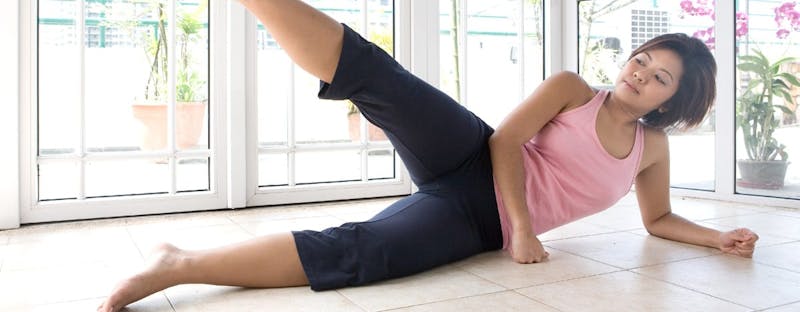Schedule a Consultation
Contact Us


Affecting approximately 30 percent of the population, flat feet don’t always cause enough pain to require surgery. Still, abnormal arches can contribute to foot, ankle, and even knee pain because of the way leg alignment may be affected. If your discomfort isn’t too severe or constant, you may benefit from exercises, like the ones discussed below, to help correct flat feet.
1. Calf/Heel Raises
Standing calf raises and heel raises are exercises designed to strengthen the muscles and connective tissues that support your foot’s arch. With both calf raises and heel raises, you’ll lift your heel off of a flat surface as high as possible. The difference with these exercises is that you’ll lift your feet higher off the ground if you wish to work your calf muscles at the same time.
2. Hip Flexor/Towel Stretches
When hip flexors are tight, range of motion may be affected and added stress can be placed on certain parts of the body, including the arches in feet. Work your hip flexors by sitting on a yoga mat or comfortable surface. Put the soles of your feet together directly in front of you and push your knees to the floor in a gentle manner. Hold for about 20-30 seconds with your back straight and release. Another exercise you can do while on the floor is towel stretches. Take a towel and loop it around the bottoms of your feet and gently pull it forward. The purpose of this type of stretch is to stimulate and strengthen your Achilles tendon.
3. Calf Stretches
Calf muscles run along lower legs down to your heels. If you have limited ankle flexibility because of tight calf muscles, you may experience over-pronation (arches roll inward or downward) and increased discomfort related to flat feet. Stretch your calf muscles by standing about a foot away from a wall and placing your hands against it for balance. Extend one leg backward while pushing forward as you bend the knee on the other leg until you feel the stretch in your calf area. Switch legs and repeat.
4. Toe Yoga
There are roughly a couple dozen muscles that control your foot’s shape and its various movements. The ones linked to your toes, in particular, are often overlooked. One way to target these muscles is with “toe yoga,” which is performed by lifting your big toe up as you gently press the other toes downward. Reverse the process and press your big toe downward as you lift your other toes.
While it may seem counterproductive to optimal foot health, there’s evidence suggesting that going barefoot may help strengthen foot-supporting muscles. If this doesn’t work for you, motion-control shoes may be beneficial, especially if you have flexible flat feet. Rigid flat feet are more likely to require attention from a podiatrist.